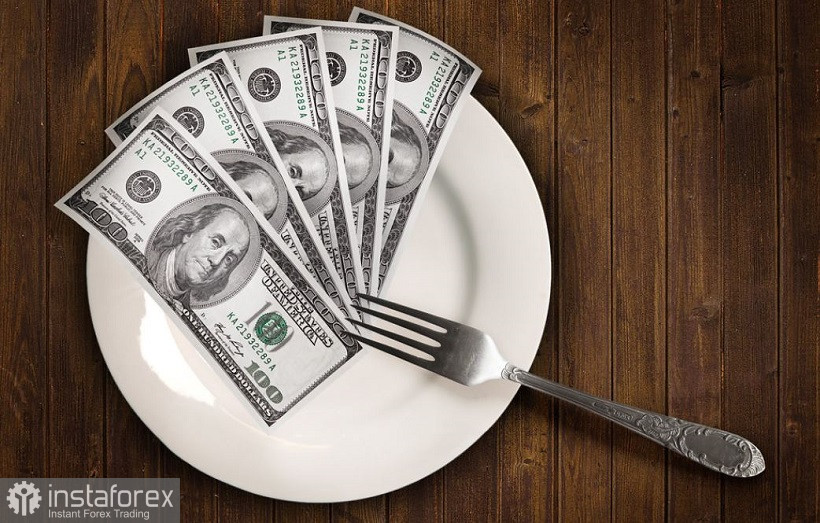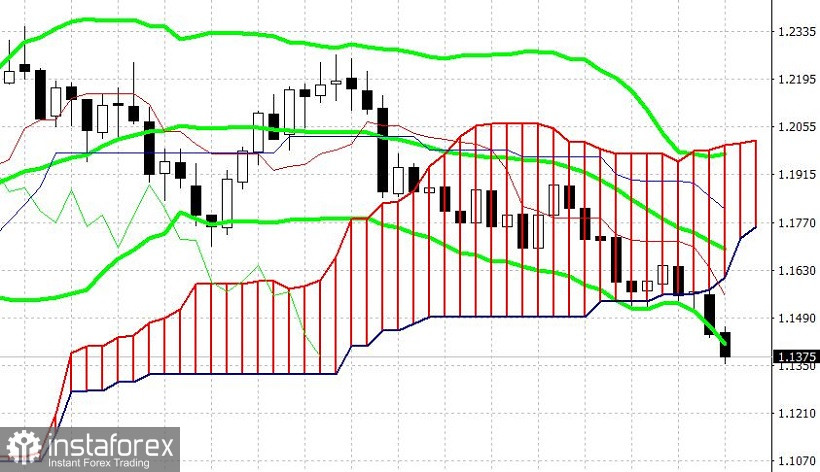The EUR/USD pair updates annual price lows almost daily, following the US currency, which is strengthening its position throughout the market. During today's Asian session, the bears of this instrument reached the area of 1.13, impulsively breaking through the support level of 1.1400.
Sellers easily cope with price barriers, conquering them almost without a fight. The pair's decline is due not only to the strengthening of the US dollar but also to the weakening of the euro. The Euro currency is getting cheaper both in a pair with the US dollar, and in key cross-pairs like EUR/GBP, EUR/JPY, and EUR/CHF. Yesterday's speech by Christine Lagarde in the European Parliament only increased the pressure on the euro. The head of the ECB ruled out the option of raising the rate within the next year and remained committed to a soft exchange rate. For the last two weeks, a similar position has been voiced by many ECB members, thereby refuting rumors that the regulator will decide to tighten the parameters of monetary policy ahead of the deadline. In particular, the Governor of the Bank of Spain, Pablo Hernandez de Cos, said yesterday that medium-term inflation is still below the ECB's target. According to him, the conditions necessary for the rate increase have not been confirmed and are unlikely to be confirmed until 2023. A similar position was previously voiced by other ECB representatives, in particular, Lane, Knot, Shimkus, Ren, Schnabel.
Nevertheless, the main locomotive of the downward movement of EUR/USD is the US dollar. The US dollar index rose to 95.47, the highest value since July last year. The US currency has strengthened its positions in all major pairs. Most strongly – paired with the euro, since the euro became cheaper simultaneously with the strengthening of the dollar.

The impressive rally of the US dollar is explained by the strengthening of hawkish expectations regarding the Fed's further actions. The market had played out the start of the curtailment of the incentive program in advance, and now it is also playing out the expected rate increase next year. Yesterday, analysts of the banking conglomerate Goldman Sachs published their forecast, according to which the Fed will raise the interest rate in July 2022. According to the bank's economists, US inflation will continue to rise in the winter, but then it will decrease to the 2% target level. As for the situation in the labor market, the unemployment rate should decline to a pre-crisis low of 3.5% in the middle of next year. Moreover, Goldman Sachs believes that the decrease in unemployment will be accompanied by an increase in wages, due to high demand for labor and a reduction in the volume of supply in the market. These circumstances will support the growth rate of wages above the 4% mark. It can be recalled that the average wage growth was 4.9% according to the latest data.
In other words, experts say that the necessary conditions for the first round of interest rate increases will be created in 7-8 months. In general, the published forecast of Goldman Sachs reflects the opinion of most traders and many analysts. Hawkish expectations are growing despite the restrained rhetoric of Fed Chairman Jerome Powell, who, on the one hand, does not rule out the option of raising the rate in 2022, but on the other hand, expresses confidence that there will be no such need – inflation will slow down to comfortable values for the Fed. But judging by the dynamics of the US currency, an obvious conclusion can be drawn that the market does not believe Powell, betting on tightening monetary policy in the middle of next year. Moreover, the earlier forecasts of the Fed regarding the growth of inflation did not come true: the consumer price index in the United States in October updated a 30-year record instead of showing the first signs of a slowdown. The latest Nonfarm data have also worsened the situation. Recall that all the components of the release came out in the green zone, reflecting the recovery processes in the labor market.
All this suggests that the EUR/USD pair will be under pressure at least in the medium term. Today, all the attention of traders will be focused on the release of data on the volume of retail sales in the United States. It should be borne in mind that the consumer confidence index in the United States in November fell to a 10-year low amid a record increase in inflation. In the context of these trends, today's release is particularly important and may provoke increased volatility. In October, the indicators are expected to increase: the overall indicator should rise to 1.2%, and to 1.0% excluding car sales.

The fundamental picture for the EUR/USD pair develops in such a way that it is advisable to use any corrective rebounds to open short positions. The technical side of the issue also speaks about the priority of sales. Analyzing the higher timeframes (from H4 and above), the price is either between the middle and lower lines of the Bollinger Bands or under the lower line of this indicator, which indicates the priority of the downward direction. As for the D1 and W1 timeframes, the Ichimoku indicator has formed a bearish "Line Parade" signal, which also indicates the bearish mood. The first, and so far the main downward target is the round and psychologically important level of 1.1300.





















